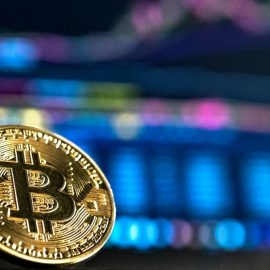

This article is an excerpt from the Shortform book guide to "The Shock Doctrine" by Naomi Klein. Shortform has the world's best summaries and analyses of books you should be reading.
Like this article? Sign up for a free trial here .
What was the 1997 Financial Crisis? Which countries were affected?
The 1997 Financial Crisis that hit many Asian countries significantly affected their economies given the momentum, extent, and vitality under which the meltdown occurred. The crisis greatly affected various nations including South Korea and other Asian Tigers.
In this article, you’ll learn how the 1997 Financial Crisis started, and what happened in its aftermath.
Asia Goes Broke
The 1997 Financial Crisis was sparked by an unsubstantiated rumor that Thailand didn’t have enough wealth to support its currency. In the newly globalized, electronic market, that alone was enough to trigger an economic disaster. Banks called in loans, which served to pop the quickly inflating housing bubble. Half-finished construction projects were abandoned all over the country, and the economy took a devastating hit.
Mutual fund brokers had previously presented the Asian countries as a single investment package. As a result, the crisis quickly spread beyond Thailand to Indonesia, the Philippines, Malaysia, and South Korea. Those countries had to empty their reserve banks just to sustain their currencies, which caused the unfounded rumor to become a reality: Now they really were going broke.
Decades’ worth of wealth disappeared from Asian stock markets in a single year. Naturally, as the economic situation in Asia worsened, investors were less willing to put money into those countries. Asian nations were caught in a cycle of fear that could only be stopped by a sudden, large influx of money.
However, the message from the financial establishment was clear: do not help Asia. Milton Friedman himself appeared on CNN to insist that the market be allowed to correct itself, as per Chicago School orthodoxy.
In November 1997, at the Asia Pacific Economic Cooperation Summit, US president Bill Clinton made their position clear: The US Treasury wouldn’t be stepping in. The IMF was similarly reluctant—when it finally did respond, it wasn’t with a simple loan, but a list of now-familiar demands that would implement free-market economies in the affected countries.
Those countries who accepted the IMF’s “help” suggested that their problems had started because of how easily money could flow across their borders, so maybe they should put some economic controls back in place. However, the IMF refused to even consider that idea. In other words, the IMF had no interest in what had created the crisis; they just wanted to use that crisis as leverage.
Because ordinary people wouldn’t accept the IMF’s demands, those countries’ governments had to make policy changes through emergency decrees, which left average citizens with no say in the matter. Once again, free-market reforms had trampled over democracy.
The Results
The IMF’s “intervention” in Asia produced results almost as devastating as those in Russia. At its worst point, Thailand was losing 2,000 jobs every day. In South Korea, 300,000 workers got fired per month. Indonesia’s unemployment rate climbed from 4 to 12 percent. In all, an estimated 24 million people lost their jobs.
As a result, the middle class shrank dramatically—63.7% of South Koreans identified themselves as middle class in 1996, and only 38.4% did so in 1999. Suicide rates and child prostitution rates increased as desperate families looked for any way out of their crushing poverty.
In spite of the human costs of their policies, the IMF thought that things were going well, economically speaking. It had taken less than a year to implement economic shock therapy programs in Thailand, the Philippines, Indonesia, and South Korea. Now they were ready to reintroduce those countries to the global markets—which, they hoped, would immediately start buying up the newly available currencies, bonds, and stocks.
Instead, the exact opposite happened. Would-be investors reasoned that, if those countries had been in such dire straits that their economies had to be remade from the ground up, then Asia must be in much worse condition than they’d thought. Rather than rushing to take advantage of these new opportunities, investors pulled out even more of their money, further worsening the crisis.
While the people suffered, vulture capitalists were only too happy to pick over the remains. Major Wall Street firms moved in and started cheaply buying shares in major companies like Kia. Samsung, once an industry titan, was divided up and the pieces sold off for a fraction of their former value. Daewoo’s car division, once valued at $6 billion, was sold to General Motors for only $400 million. It was Russia all over again, but this time the local firms were being pushed aside by multinational corporations.
The brutal economic crisis in Asia revealed how badly economic shock therapy could backfire: Not only did citizens of the “Asian Tigers” suffer terribly, but the investors whom the IMF hoped to attract wanted nothing to do with those countries.
Unexpected Backlash
The debacle in Asia also showed that if shock therapy went too far, it could spark a backlash to free-market thinking. For example, in Indonesia—where there had been a low-burning public rage ever since Suharto’s 1965 coup—the IMF went one step too far by demanding that Suharto raise the price of gasoline. In response, the people finally rose up and ousted the former general.
While Indonesia had the most dramatic backlash to the IMF’s free-market policies, people all over Asia were enraged at how their lives could be destroyed by the careless whims of hedge funds on the other side of the planet. Unlike in Russia, where the hardship could be spun as a painful but necessary transition from Communism to a free market economy, the Asian crisis was clearly the fault of the global markets. Then, when those same markets sent “help” to the suffering countries, all they did was make matters worse.

———End of Preview———
Like what you just read? Read the rest of the world's best book summary and analysis of Naomi Klein's "The Shock Doctrine" at Shortform .
Here's what you'll find in our full The Shock Doctrine summary :
- A study of the history of economic shock therapy
- How economic shock therapy gave rise to the disaster capitalism complex
- How communities are beginning to recover from the destructive shock treatments






